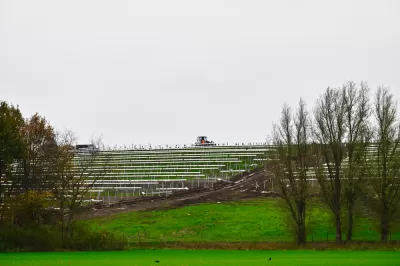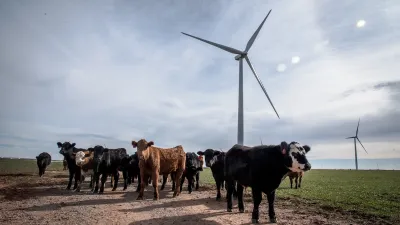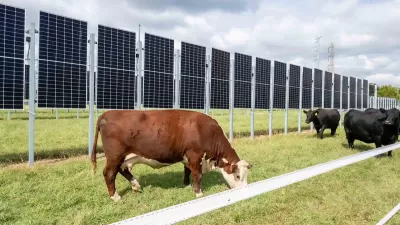Incentives aimed at brownfield development of renewable energy projects could give momentum to building solar farms on an underutilized property: closed municipal landfills.

A new tax credit created through the Inflation Reduction Act (IRA) could boost the construction of solar farms on shuttered landfills and other brownfield sites, which could reduce the impact of solar installations on virgin land and make renewable energy production accessible to more communities.
As Taylor Kate Brown explains in a Governing article, closed landfills offer unique challenges and unique opportunities. They are often owned by local governments, have strong sun exposure, and are unsuitable for other types of development, making them a logical site for energy production. “But placing solar modules on these sites requires a different kind of installation: a ballasted system that doesn’t drive foundations deep into the ground, avoiding piercing the landfill cap and unsettling the waste below,” Brown explains.
The success of subsidies and incentives for renewable energy production offered by state governments indicates that the federal tax break could encourage more brownfield development of clean energy projects. After Massachusetts created subsidies for renewable energy projects located on landfills, the state, which only has 7 percent of the nation’s landfills, became home to 52 percent of U.S. utility-scale landfill solar projects. Now, municipalities that previously rejected solar landfill projects due to cost or complications are revisiting the idea.
FULL STORY: Why Aren’t More Solar Farms Built on Municipal Landfills?

Planetizen Federal Action Tracker
A weekly monitor of how Trump’s orders and actions are impacting planners and planning in America.

Chicago’s Ghost Rails
Just beneath the surface of the modern city lie the remnants of its expansive early 20th-century streetcar system.

San Antonio and Austin are Fusing Into one Massive Megaregion
The region spanning the two central Texas cities is growing fast, posing challenges for local infrastructure and water supplies.

Since Zion's Shuttles Went Electric “The Smog is Gone”
Visitors to Zion National Park can enjoy the canyon via the nation’s first fully electric park shuttle system.

Trump Distributing DOT Safety Funds at 1/10 Rate of Biden
Funds for Safe Streets and other transportation safety and equity programs are being held up by administrative reviews and conflicts with the Trump administration’s priorities.

German Cities Subsidize Taxis for Women Amid Wave of Violence
Free or low-cost taxi rides can help women navigate cities more safely, but critics say the programs don't address the root causes of violence against women.
Urban Design for Planners 1: Software Tools
This six-course series explores essential urban design concepts using open source software and equips planners with the tools they need to participate fully in the urban design process.
Planning for Universal Design
Learn the tools for implementing Universal Design in planning regulations.
planning NEXT
Appalachian Highlands Housing Partners
Mpact (founded as Rail~Volution)
City of Camden Redevelopment Agency
City of Astoria
City of Portland
City of Laramie





























